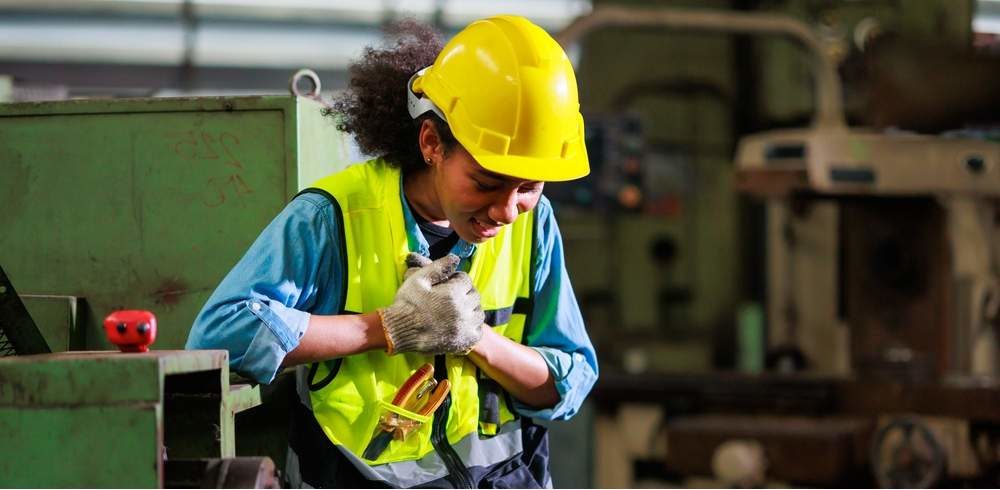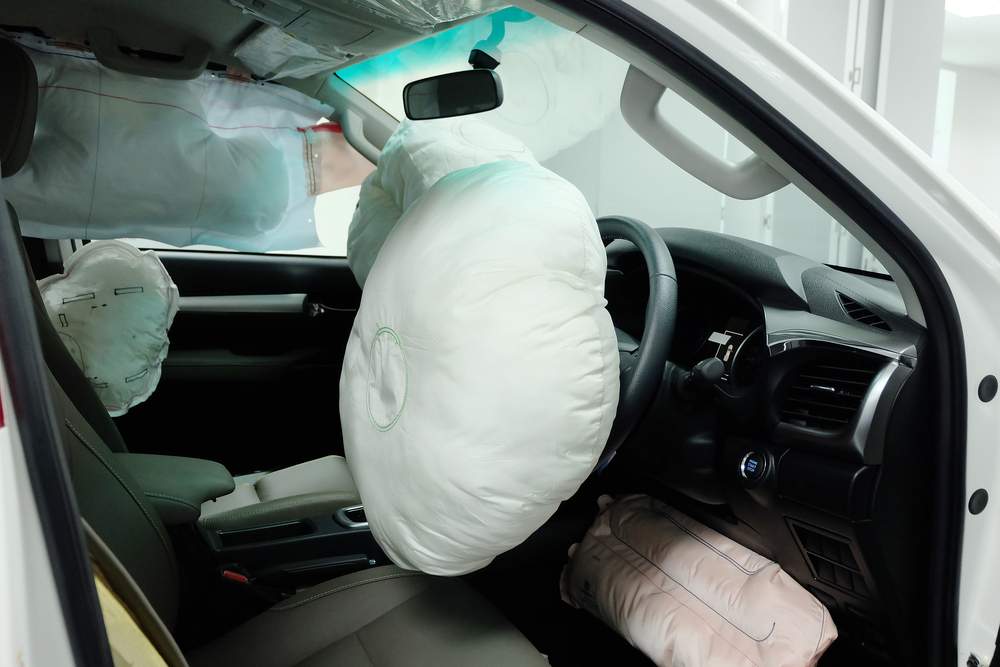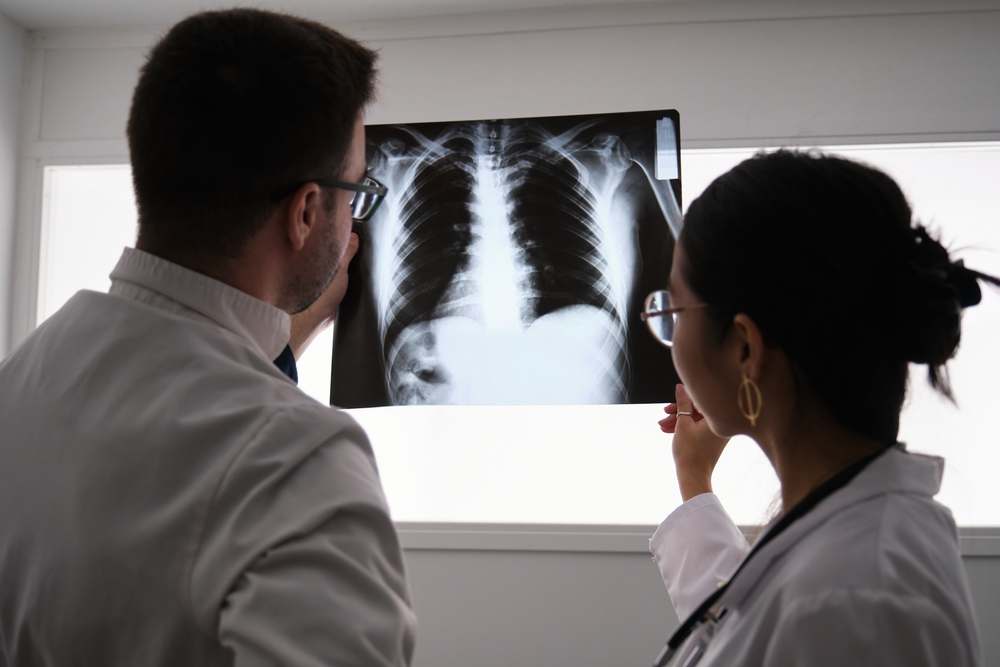 You don’t expect to be hurt while doing something as routine as driving your car or completing your 40-hour work week, but the reality is that injuries can happen anywhere. Car accidents happen at a higher rate than workplace accidents, but depending on the industry you work in, both can be devastating. Some of the most common injuries in car accidents are chest injuries.
You don’t expect to be hurt while doing something as routine as driving your car or completing your 40-hour work week, but the reality is that injuries can happen anywhere. Car accidents happen at a higher rate than workplace accidents, but depending on the industry you work in, both can be devastating. Some of the most common injuries in car accidents are chest injuries.
Because your chest is a large area that contains many vital organs, injuries to the chest can be incredibly serious and sometimes involve a long recovery time. AICA Orthopedics in Marietta is a highly experienced comprehensive clinic with daily car accident and workplace injury cases. The moments after an accident and injury can be confusing and emotionally distressing. It is important to choose a clinic with experience to be with you from the initial injury through your recovery.
Why Are Chest Injuries Dangerous?
Chest injuries are some of the most dangerous trauma-related injuries. Most often, chest injuries affect the ribs, clavicles, lungs, heart, muscles, sternum, blood vessels, and organs in the upper quadrants of the abdomen. Chest injuries cause approximately 25% of deaths due to severe injuries.
Injuries to your chest can impact your ability to breathe and your body’s ability to circulate blood. Without these two functions, your brain can suffer a lack of oxygen and is susceptible to brain damage.
What Are Some Causes of Chest Injuries?
Chest injuries can be loosely classified by external causes.
- Struck by an object
- Crush injury
- Falls
- Penetrating trauma
Car Accidents vs. Workplace Injury
What Causes Chest Injuries in a Car Accident?
 Blunt force trauma is a major cause of injuries in a car accident. Blunt force trauma is a result of an object colliding with your body. In a car accident, this could be the airbags, steering wheel, or even the seatbelt. When an object and your body collide, the force transference can result in blood vessels and organs being crushed or torn.
Blunt force trauma is a major cause of injuries in a car accident. Blunt force trauma is a result of an object colliding with your body. In a car accident, this could be the airbags, steering wheel, or even the seatbelt. When an object and your body collide, the force transference can result in blood vessels and organs being crushed or torn.
Airbags Deploy
If your car accident results in the airbags deploying, you can receive a blunt force hit from the airbags deploying into your chest.
Steering Wheel Injuries
When you come to a sudden stop, your body experiences whiplash. That forward motion can cause your chest to hit the steering wheel or even the dashboard if you are the passenger.
Seat Belt Injuries
The same force that propels you into the steering wheel forces your seatbelt to perform its job. When the seatbelt locks and prevents the force of the collision from throwing you through the windshield, that force is transferred across the chest. This can result in bruising, abrasions, broken ribs, or other internal injuries.
What Causes Workplace Chest Injuries?
The most common injuries in the workplace are trips, slips, and falls. These accidents can result in a variety of injuries ranging from mild to life-threatening.
Hit by Objects
This is especially common if your place of employment is any type of worksite with construction materials. Being hit with objects and equipment can mean scenarios such as a worker being struck by a moving object or a worker striking a stationary object.
Slips, Trips, and Falls
Falls in the workplace are nearly 100% preventable. Most workplace falls are a result of insufficient training, negligence, substandard safety protocols, and general inattention.
Crush Injuries
Crush injuries actually fall under being hit by an object, but because the injuries are fairly unique, they are talked about separately. Crush injuries happen when a worker is stuck or crushed between collapsing structures or materials.
Most Common Types of Chest Injuries
Rib Fractures
A fracture occurs when excessive force is applied to a bone, and the bone gives way beneath that force or pressure. Rib fractures are typically caused by a fall or car accident. By itself, a rib fracture is not dangerous, but if the fracture is severe, it could penetrate the skin or surrounding organs.
Pneumothorax
A collapsed lung, also called a pneumothorax, can be life-threatening if not treated promptly. There are three types of pneumothorax, open, tension, and traumatic. When air is collected between the chest wall and the lung, usually due to an open chest wound, this is called an open pneumothorax. The air collecting in the space around the lung causes the lung to collapse. A tension pneumothorax is similar to open pneumothorax, but it causes continued pressure on the heart, slowing its beating, and can become fatal quickly. A traumatic pneumothorax is the same as an open pneumothorax, but the hole allowing air in is a result of an injury.
Hemothorax
Similar to a collapsed lung, a hemothorax is when blood accumulates between the lung and chest wall. This is a form of internal bleeding and is considered a severe injury. Because a hemothorax is not painful, you may not be aware you have one. Without the accumulated blood being drained, you will feel short of breath, dizzy, and may have low blood pressure. Treatment will include repairing the initial injury and draining the blood compressing your heart and lungs.
Pulmonary contusion
Unlike pneumothorax, a pulmonary contusion is a bruise to the lungs. A pulmonary contusion usually requires extreme force to develop, such as a car wreck. When the lung is bruised, this can cause pain, make breathing difficult, and can turn fatal quickly. A pulmonary contusion restricts the amount of oxygen the tissue of the lungs can perfuse, resulting in low levels of oxygen in the bloodstream. A contusion like this can cause blood and fluid to build up in the lungs.
Myocardial contusion
Like a pulmonary contusion, a myocardial contusion is a bruise, but this time it is a bruise on the heart. In some cases, the trauma of the heart being hit so severely can sometimes cause instant death. The contusion compromises the heart’s ability to pump blood to the rest of the body.
Muscle strain
A muscle strain occurs when more force than usual is applied to a muscle. Usually, it is the result of trying to keep your body steady during an auto accident or fall. For a muscle strain, your doctor will most likely recommend rest, anti-inflammatories, and ice to help ease any aches and pains.
Sternal fracture
A fracture of the sternum is not a common injury in the workplace or car accidents but is a possibility. Sternal fractures are very severe and painful. The sternum is one of the strongest bones in the body, as it is responsible for protecting your heart and lungs. If your sternum fractures, you will have other severe injuries as well.
A sternal fracture needs to be diagnosed and treated as quickly as possible because of the vital organs it protects. If the fracture is severe enough, you may require surgery to secure the sternum with wires and screws.
Clavicle fracture
Also called the collarbone, the clavicle is one of the main bones in the shoulder, sitting on the front of your chest and framing your neck. Unless the fracture is very severe, it is typically treated with immobilization using a sling.
Internal bleeding
A potentially severe injury to your chest is any trauma that causes internal bleeding. Internal bleeding occurs when your organs, muscles, or arteries are so damaged they release blood into the peritoneal space. The blood is released below the skin and is often undetectable until it is already catastrophic.
Symptoms of Chest Injuries
The symptoms of a chest injury vary depending on the specific injury. However, there are some key symptoms to watch for if you have been in a car accident or workplace accident. If you are experiencing any of these symptoms, please get medical attention promptly.
- Shortness of breath – can feel like it is hard to breathe, like you can’t catch a breath, and sometimes may experience pain on inhalation.
- Chest pain – sharp, shooting pain can indicate a broken rib while throbbing, aching pain can indicate a concussion or internal bleeding
- Bruising and tenderness – bruising can indicate internal bleeding or just a bump from blunt force trauma.
- Visible deformity – for severely broken bones, you may have a visible deformity on your chest.
When Should You Seek Medical Treatment?
If you have been in a car accident or suffered an injury at work, seeking medical treatment quickly is important. Not only can a thorough medical exam find injuries you may have missed otherwise, but a medical examination will also help if you need to pursue legal action.
If you experience any signs or symptoms previously mentioned here, please call and schedule an appointment for a complete evaluation as soon as possible.
How Are Chest Injuries Diagnosed?
Some chest injuries don’t sound too serious, but they can be severe injuries with consequences if left undiagnosed and untreated. Many times there is no external indication of a chest injury, so diagnostic imaging is key in determining the severity of your injury and the best steps to take when developing the best treatment plan.
- X-Ray: This form of medical imaging takes a picture of the patient’s chest and shows calcified and opaque objects, like the skeletal system. X-rays are used to identify fractures, such as rib or arm fractures.
- MRI: Using magnets to generate pictures of your soft tissues, MRIs (magnetic resonance imaging) is utilized to identify injuries to tissue, nerves, ligaments, and even spinal canal contents.
- CT Scan: Computed Tomography scans have a much higher resolution than an x-ray. CT Scans can be used to help identify lung and heart problems as a result of an accident.
- Ultrasound: This non-invasive procedure is used to identify free fluid, blood, and other vascular injuries.
What Kind of Treatments Should You Expect?
 Depending on the results of both a physical examination and diagnostic imaging, your doctor will determine how best to move forward with treatment. If your injuries are severe, you will be transported to an Emergency Room. These physicians are experts in treating traumatic injuries.
Depending on the results of both a physical examination and diagnostic imaging, your doctor will determine how best to move forward with treatment. If your injuries are severe, you will be transported to an Emergency Room. These physicians are experts in treating traumatic injuries.
If your injuries are minor or don’t appear major, you might not need emergent treatment. However, it is important to be evaluated as soon as possible. AICA Orthopedics is here 24/7 to evaluate you for injuries you may have sustained but are not aware of.
Our team at AICA Orthopedics in Marietta can help you navigate the system of car accident injury treatments while helping you through the healing process. AICA Orthopedics offers state-of-the-art physical therapy, chiropractic, and orthopedic services and is ready to treat you. The bottom line is if you have a chest injury, you will probably have other injuries needing treatment and follow-up through the healing process.
Contact AICA Marietta Today
If you have been in a workplace or car accident, AICA Orthopedics Marietta is available 24/7 to evaluate, diagnose, and treat any injuries you may have sustained. If you have suffered chest injuries, it is important to seek medical treatment promptly. The fast you seek treatment, statistically, the more positive your recovery is.
AICA Orthopedics in Marietta handles auto accident injuries daily, and we can answer any questions you may have from start to finish. We are a comprehensive clinic with a collaborative approach to treatment. Using our state-of-the-art diagnostic equipment and our experienced physical therapists, surgeons, and chiropractors, we can develop a complete recovery plan to meet your goals and get you back to a pain-free life. Contact AICA Orthopedics in Marietta, where your top-rated team is ready to see you!